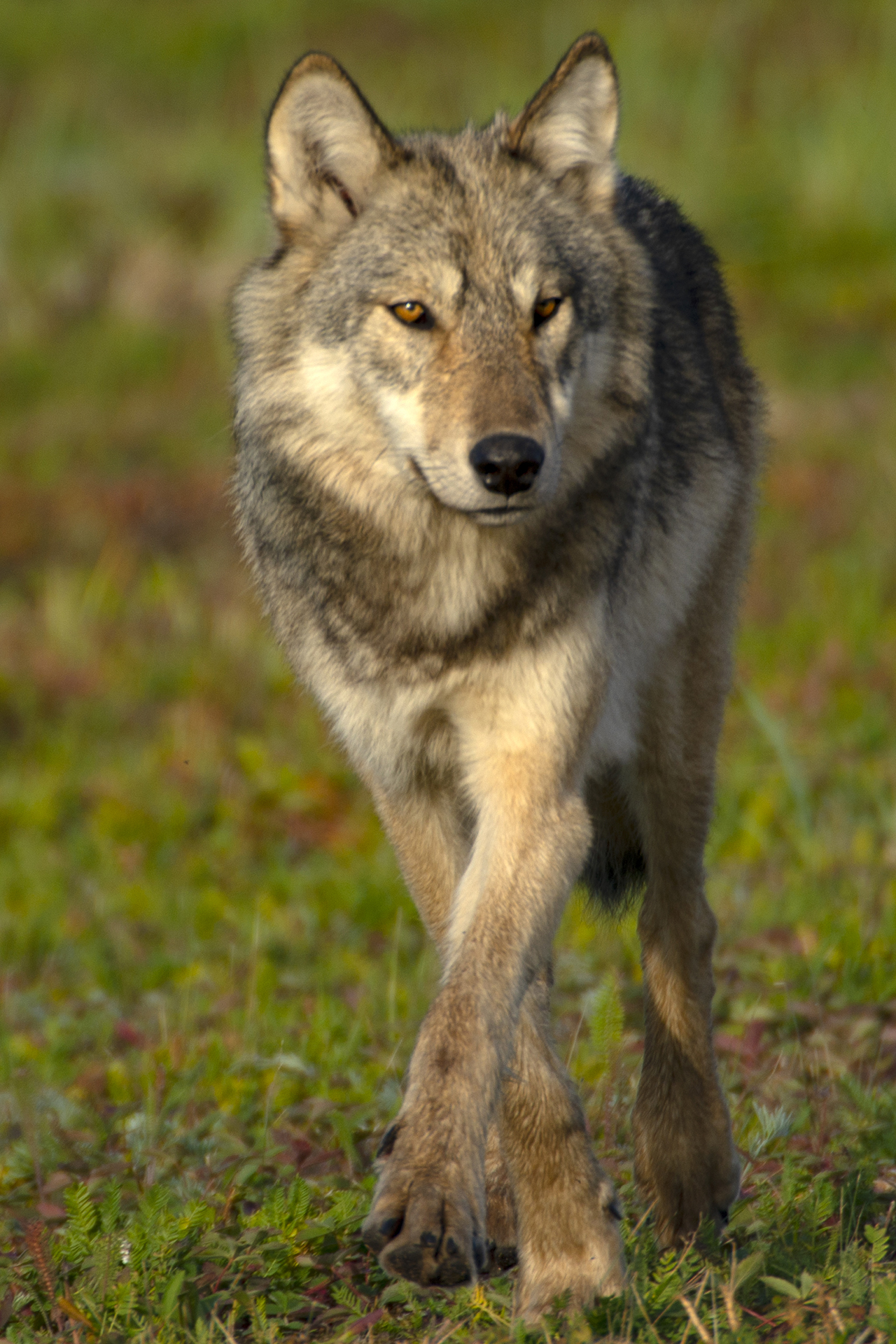Scientific name: Canis lupus
Average length/height: 1.2-2.1m (4-7ft)
Average weight: females 23-55kg (50-120lbs), males 30-80kg (66-176lbs)
Characteristics
Grey wolves are not always grey, rather they can be a mix of grey and brown and even solid white or black. They have a biting capacity between 1,000-1,500 pounds per square inch. Wolves’ sense of smell is up to a million times stronger than humans, and they see the world at a faster pace than we do, allowing them to track movement (San Diego Zoo Global Library, n.d.). Since wolves can run up to 70 kilometers (43 miles) per hour, they need to be able to see fast movements. They do excel more at running long distances, covering up to 70 kilometers in a day.
Wolves are intelligent creatures with highly organized social systems, and they contribute in very healthy ways to the balance that exists in the Arctic ecosystem. Wolves howl to communicate with distant members of their own pack (their family group), to announce their presence to neighboring packs, and sometimes it seems, just because the mood (or moon) strikes them.
Pressure from people makes wolves very skittish, but where that pressure is minimal, as is the case at our lodges, they become quite trusting and we’re able to see them almost as often as we hear them.
Territory/Geographical Locations
The grey wolf used to be the most widely distributed mammal in the world. Grey wolves could be found across all of North America, Europe and Asia. Currently, you can find them in Canada, some northern parts of the United States, and northern Russia and China.
Their pack territory can be anywhere from 75 to 2,500 square kilometers. Grey wolves can live in a variety of habitats such as: forests, tundra, deserts, plains and mountains (Canadian Geographic, 2014).
Population & Reproduction
The size of a wolf pack can depend on the prey population, averaging five to 12, but can be as large as 36 wolves. The alpha pair is generally mated for life and their pack is made up from pups from previous years, who are the babysitters for any new litters. Litters typically produce five or six pups, and they have a nine-week gestation period.
The wolf pups are weaned at six weeks and then begins the fun meal-time deliveries. Adult wolves in the pack will swallow meat and regurgitate it in the den for the pups. They can hold up to 10kgs of meat in their stomach to deliver for the pups (Canadian Geographic, 2014). Pretty impressive!
Grey wolves live between eight and 16 years in the wild.
Grey wolves are endangered in some areas of the world but have a healthy population across Canada, approximately 60,000 wolves (International Wolf Center, 2018)
Diet
Wolves are carnivores and focus mainly on large mammals. This includes deer, moose, elk, caribou and even bison and muskox. Most of their prey puts up quite the challenge with their speed, size and strength, so wolves rely on each other to strategically hunt their prey. Taking turns running it down, herding it towards other pack mates, and tiring it out.










